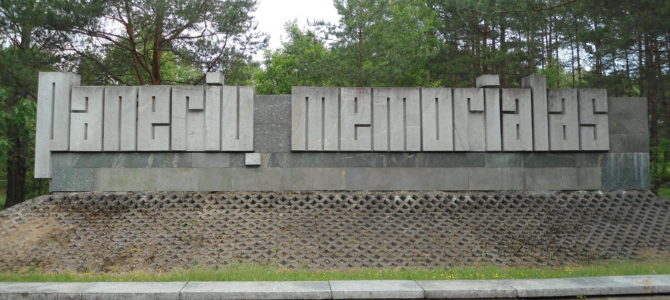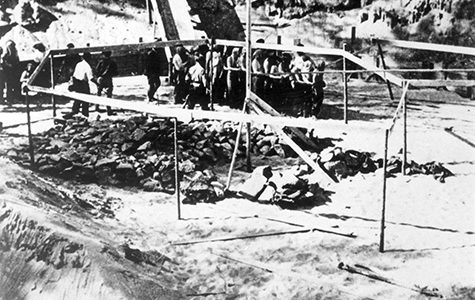
A team of archaeologists from the US, Canada, Israel and Lithuania have discovered the escape tunnel dug by the burners’ brigade at Ponar as well as new killing pits.
“New pits were discovered, overgrown paths were also found along which the victims were taken, and the ashes of burnt corpses distributed over the area. And also, the most important thing, the act of resistance, the escape tunnel, about which so much is said in the literature… Now without margins of error its length has been measured, about 30 meters, very exactly, Markas Zingeris, director of the Vilna Gaon State Jewish Museum told Lithuanian Radio and Television Wednesday.
He said the findings at Ponar will lead to new information stands and exhibits. The tunnel might also become part of the new museum planned at Ponar.
“Since the museum will be built there, parts, the escape tunnel, for example, which is interesting throughout Holocaust literature and World War II historical sources, it could be part of the museum exhibition,” Zingeris said.
The “digs” at Ponar are actually being performed using new non-invasive geophysical technology. The group is led by Hartford University professor Richard Freund and Israeli antiquities agency head of archeological digs Dr. Jonas Seligman. Partners include the Lithuanian Jewish Community, Vilnius University, Hebrew University in Jerusalem and the Vilna Gaon State Jewish Museum in Vilnius.
The Ponar Memorial Complex located on the outskirts of Vilnius is dedicated to Holocaust victims and all victims of the Nazis. From 1941 to 1944 the mass shooting of most of the Jews of Lithuania took place here. The Nazis also executed other people and groups there and the complex includes a Polish memorial. Soviet Red Army POWs were also executed there.
Near the end of the war the Nazis began hiding evidence of the Holocaust and a team of slave laborers were brought to Ponar, imprisoned in chains and housed in an earthen pit. Their job was to exhume the almost exclusively Jewish corpses–over 70,000 bodies–burn them in large piles using wood and gasoline, then grind the remaining bones and teeth into powder. After the work was finished they, too, would be executed on the spot. An escape plan was hatched, a tunnel slowly excavated from the pit which served as their prison, and about a dozen did escape. Most were shot as they fled, but several did escape.
BNS and LJC info


